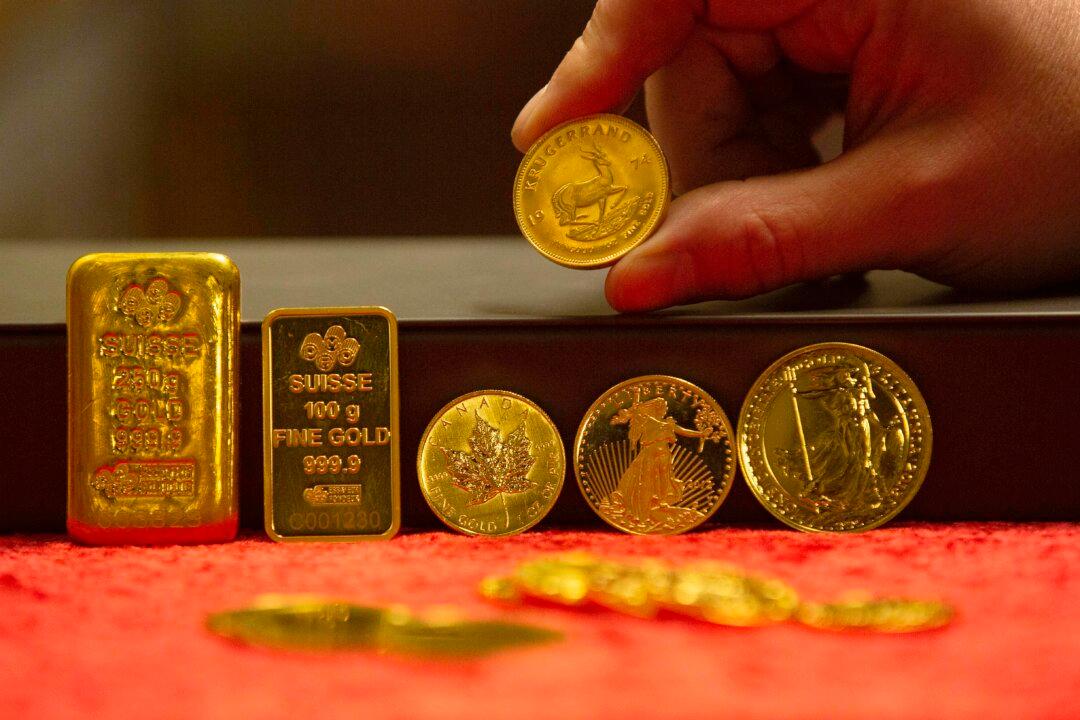Gold on July 27 finally broke its previous record high established in 2011. The yellow metal is up over 30 percent from its low in March, and there may be an opportunity at hand for Canada’s economy to profit while being mindful of the pandemic.
“Canada remains one of the top-ranked jurisdictions for mining investment in the world. And I think probably the way the industry has managed the pandemic is going to work in its favour,” Mining Association of Canada (MAC) president and CEO Pierre Gratton told The Epoch Times.
The MAC established a task force of members in the early days of the pandemic, and Gratton said Canada’s mining sector has seen very few COVID-19 cases relative to its global peers.
He added that miners are not yet at full production but are getting there, contingent on taking all the necessary precautions. “Costs are higher. It costs more to put in these mobile test centres and fly or bus people safely to sites,” he said.
The worst thing that could happen is being forced to close, Gratton said. “Everybody’s being very careful.”
But despite the record prices, BMO senior economist Sarah Howcroft also doesn’t expect gold companies to rapidly expand production given the hard lessons learned in the early 2000s, when many took on a lot of debt to develop marginal projects.
“Companies are more cautious this time around, and will look for sustained higher prices before committing to major capital outlays,” she told The Epoch Times.
Hitting US$2,000 an ounce is well within reach, but likely not sustainable if the economic recovery takes shape later this year and into 2021, she said.
“We continue to expect some modest pullback from current levels once the global recovery starts to gain traction,” Howcroft said.
However, other analysts, like Bank of America’s Francisco Blanch, see gold hitting US$3,000 an ounce over the next 18 months.
Challenges, Opportunities
Boom and bust cycles in gold come and go, but Gratton is starting to see mining projects get advanced, such as Iamgold’s Côté project in Northeastern Ontario.
Canada’s mining industry could use any relative advantage as the country’s attractiveness as a destination for mining investment has waned in recent years. Only five new mining projects were submitted for environmental review in 2019—far below average levels from 2012–2014.
And Australia, for one, has benefited.
Australia is Canada’s most natural pure competitor, Gratton said. It has had more success bringing mines on stream and has roughly 700 more mining firms than Canada does.
“MAC member companies suggest that Canada’s competitiveness is declining compared to other jurisdictions. Mining companies are assessing other jurisdictions outside of our own as alternative destinations for developing projects,” according to the MAC’s Facts & Figures 2019 report.
One regulatory issue Gratton singled out is the long timelines associated with regulatory approvals, though recent improvements have been seen regarding areas used for safe deposition of mine tailings.
The industry is also in need of more infrastructure in the north.
“Anything that can be done to invest in roads, ports, and power improves significantly the economics of these projects and makes new mines possible,” Gratton said.





